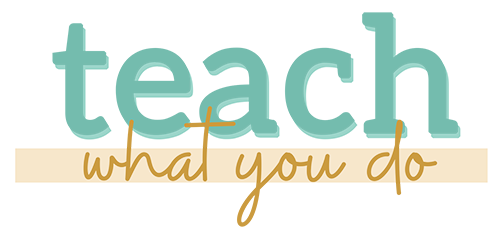
Last week you learned that creating a first small or limited online course is a great first step for your online teaching business. You learned about both beta and minimum viable products (MVP).
The benefits of starting with either a beta or MVP and selling with a “soft launch” include:
- Testing interest in your course
- Testing performance of your course and success and satisfaction of your students
- Avoiding disappointed students if your offer isn’t in line with their expectations
- Identifying improvement opportunities and making changes that let you build a course your customers really want
- Depending on course design, even pivoting during delivery if needed
- Developing a small group of fans—and testimonials
- Developing momentum for your course and the community around it
While a beta offer might be a first rough version of a large, signature course, the MVP is more limited in scope. It's a sliver of what you'll eventually offer–and a mini-course is the perfect format for delivering this “sliver.”
The question then becomes: what should your mini course topic be?
Here are three approaches or types of mini courses–and brainstorming questions for each–that you can use to figure this out.
These three types of courses are easy for a student to say “yes” to. What's more, they're structured to educate and inspire them to take additional steps–in the form of your subsequent classes.
1. The “getting started” mini course
When you take the “getting started” angle for your mini course, you teach first steps and skills that get students moving TOWARD your larger course. As important as the “teaching” of these steps and skills is the motivation of your students to DO this work. It's important to foster momentum and enthusiasm for the subject in your students.
Example of the “getting started” mini course:
Get Started with Hand Lettering could teach these first five lessons:
- How to choose pens and supplies
- How to set up your workspace, including best surfaces, lighting, and pics of workspace inspiration.
- Try this: first hand-lettering strokes.
- Know your style. Show stuents a variety of lettering projects (that you teach in your bigger or additional courses). Expose them to all that’s possible. At the same time encourage them to figure out what they like and prioritize which they’ll take on as they move forward.
- Complete hand-lettering project how-to.
To brainstorm your “getting started” mini course, consider:
- What tools (physical or virtual) do your students need?
- What working space (physical or virtual?) do your students need?
- What first skills or steps would they be excited and likely to try?
- Do these skills provide a natural segue to your paid course?
- What can you show peeks of in this course that's also a part of subsequent courses?
Be careful:
- Keep it “mini” and focused. Don't deliver so much they lose momentum or so that they don't need future courses.
- Be sure these first steps you’re teaching can be done easily and yield quick results.
- Be sure there’s a true connection between this content and the other courses you're planning for your portfolio.
2. The “excerpt” mini course
To create an “excerpt” mini course, take a sliver of your planned larger course and present a much shorter excerpted version.
If you’re planning to create and sell a big signature course with multi-lesson modules, look through them to see what could be taught on its own. Later on you'll fold this excerpt into the larger class.
If you're planning a “chocolate box assortment” to building your portfolio of classes (think Whitman's Sampler) you could excerpt one class OR take a small piece from several classes and combine those.
Example of the “excerpt” mini course: Five Scrapbook Page Starters
Long ago, I imagined a series of courses that taught “go-to” scrapbook design foundations. There would be over 20 of these classes and each of them would have 4 lessons. So that's 80 lessons total.
Knowing this, I immediately started making just ONE of the four lessons for each of FIVE of the classes. Those lessons are in a mini-course that I now give away, but that would have made a great paid mini course.
The lessons in “Five Scrapbook Page Starters” are:
- Lesson 1: the Band foundation
- Lesson 2: the Grid foundation
- Lesson 3: the Cluster foundation
- Lesson 4: the Bracket foundation
- Lesson 5: the Diagonal foundation
To brainstorm the “excerpt” mini course, do the following:
- Consider your planned future content you’ll be excerpting.
- Are there natural “starting points” within that content that could be excerpted?
- Are there distinct small pieces that would go together thematically?
- Are there distinct small pieces that would go together in a series?
Be careful:
- Make sure the excerpted pieces you use have unity.
- Make sure the excerpted pieces get your students taking actions that create momentum toward future study with you.
3. The “eye-opener” mini course
With the “eye-opener” mini course you are addressing a need or problem or desire you’ve see in people who don’t realize your solution to their problem even exists.
For example: they know they’ve got neck pain and are looking for solutions—a pillow, massage, stretching exercises. Through your mini course on reducing neck pain, you teach and move them toward your actual solution: pilates!
Example of the “eye-opener” mini course: Let's say your larger planned course is something a blogger doesn't yet know he or she needs: How to Create and Sell Your First Online Course
That class is big and expensive, though, so you start the blogger with an “eye-opener:” How to Make Money with Your Blog.
Lessons include:
- How to take inventory of your blog content
- Top ways to earn money with blogs
- What is a digital product
- Why digital products and online courses are better sources of income than affiliate offers
- How to set up and sell a pdf that compiles your best blog content
To brainstorm the “eye-opener” mini course, ask the following:
- What is the solution your bigger course offers?
- Why do people need that solution? Go deeper than the obvious – what are the real underlying things getting them to look for a solution? These are usually things like status, money, time, health, love—as they relate to your topic.
- Who else (who doesn’t know about your solution) is looking for those same solutions?
- What can you offer as an umbrella topic that moves people toward your solution?
Which one will you create?
Now you have a way to think through and choose one of three possible first mini courses.
- The “getting started” mini course
- The “excerpt” mini course
- The “eye-opener” mini course
With this mini course you are making a first offer that you can put together easily and with which your students can get first momentum. This mini course is the beginning of your complete course portfolio.
